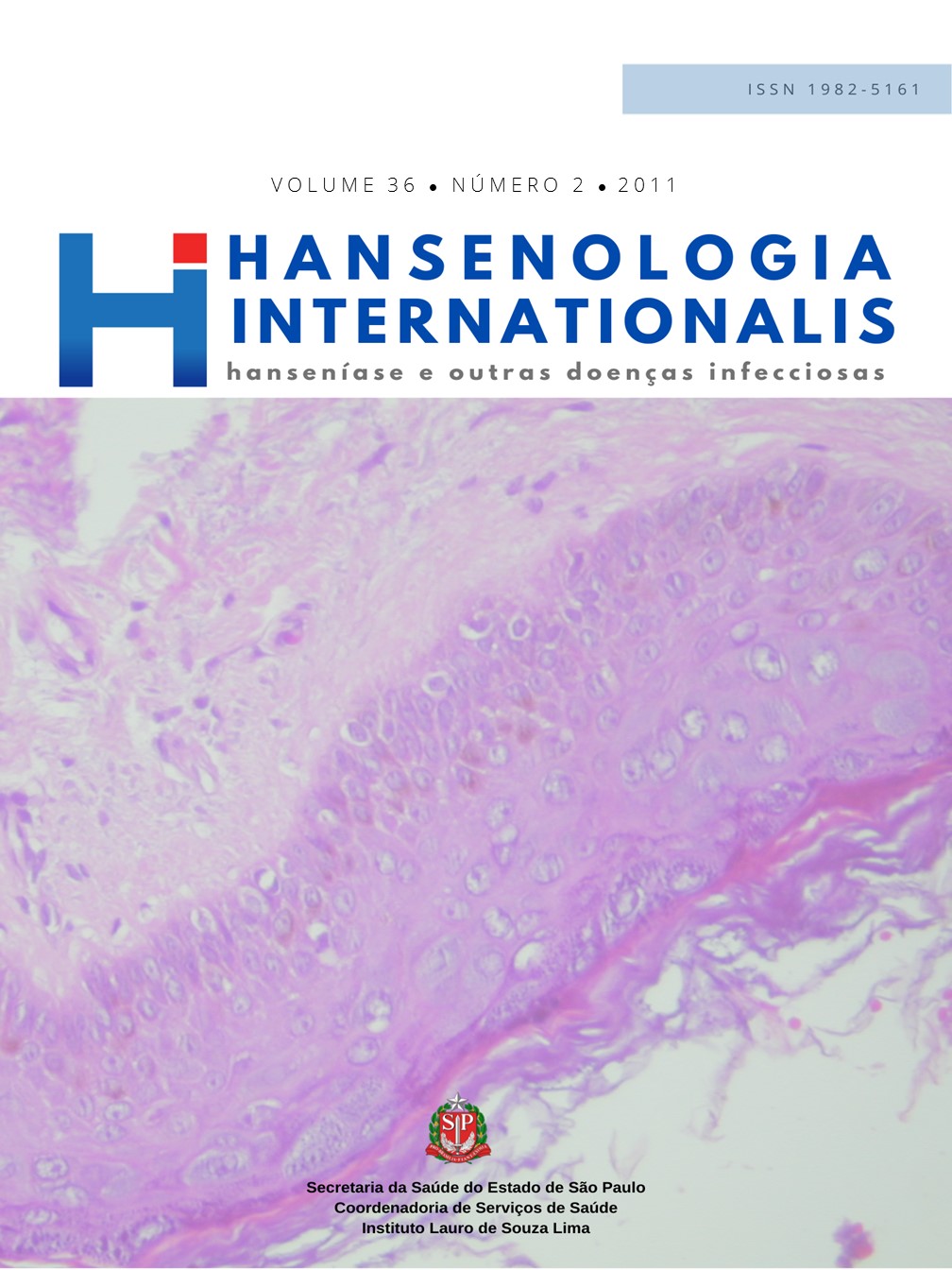Resumo
.
Referências
1 Hunter SW, Brennan PJ. A novel phenolic glycolipid from Mycobacterium leprae possibly involved in immunogenicity and pathogenicity. J Bacteriol [Internet]. 1981/09/01 ed. 1981;147(3):728–35. Available from: http://www.ncbi.nlm.nih.gov/pubmed/7024248
2 Oskam L, Slim E, Buhrer-Sekula S. Serology: recent developments, strengths, limitations and prospects: a state of the art overview. Lepr Rev [Internet]. 2003/10/28 ed. 2003;74(3):196–205. Available from: http://www.ncbi.nlm.nih.gov/pubmed/14577464
3 Cole ST, Eiglmeier K, Parkhill J, James KD, Thomson NR, Wheeler PR, et al. Massive gene decay in the leprosy bacillus. Nature [Internet]. 2001/03/10 ed. 2001;409(6823):1007–11. Available from: http://www.ncbi.nlm.nih.gov/pubmed/11234002
4 Duthie MS, Goto W, Ireton GC, Reece ST, Cardoso LP, Martelli CM, et al. Use of protein antigens for early serological diagnosis of leprosy. Clin Vaccine Immunol [Internet]. 2007/09/28 ed. 2007;14(11):1400–8. Available from: http://www.ncbi.nlm.nih.gov/pubmed/17898185
2 Oskam L, Slim E, Buhrer-Sekula S. Serology: recent developments, strengths, limitations and prospects: a state of the art overview. Lepr Rev [Internet]. 2003/10/28 ed. 2003;74(3):196–205. Available from: http://www.ncbi.nlm.nih.gov/pubmed/14577464
3 Cole ST, Eiglmeier K, Parkhill J, James KD, Thomson NR, Wheeler PR, et al. Massive gene decay in the leprosy bacillus. Nature [Internet]. 2001/03/10 ed. 2001;409(6823):1007–11. Available from: http://www.ncbi.nlm.nih.gov/pubmed/11234002
4 Duthie MS, Goto W, Ireton GC, Reece ST, Cardoso LP, Martelli CM, et al. Use of protein antigens for early serological diagnosis of leprosy. Clin Vaccine Immunol [Internet]. 2007/09/28 ed. 2007;14(11):1400–8. Available from: http://www.ncbi.nlm.nih.gov/pubmed/17898185

Este trabalho está licenciado sob uma licença Creative Commons Attribution 4.0 International License.
Downloads
Não há dados estatísticos.
